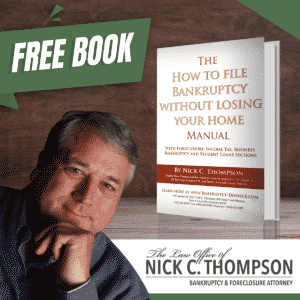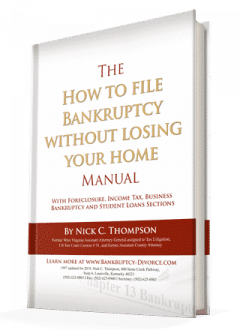How to strip Judgment liens and strip some second mortgages
Did you know you can avoid some second mortgages, and judgment liens in bankruptcy if the facts of your case are right? Many bankruptcy attorneys fail to strip judicial, second mortgages, or household goods liens! It may be they dont take the time to do it, they dont know how to do it or perhaps they felt they were not paid enough.
We do it all the time and often have to strip judgment liens other attorneys failed to strip. Of course, you have to ask and work together with your attorney to avoid these liens. Unless the attorney knows about the lien he can’t strip it. Normally attorneys charge about 750 to strip these liens. But unless you strip the lien which the bankruptcy is going on you have to both file a motion to reopen the case and a second motion to strip the lien.
Without a title exam, the attorney might not know you have a judicial lien. In fact, you might have a judicial lien placed on your property without your knowledge. There are several ways you can get rid of second mortgages and liens in bankruptcy by avoiding them, redeeming, lien stripping, or cramming down liens.
How to Avoid Second Mortgages in Chapter 13
Sometimes you can remove the second mortgage in bankruptcy. In Chapter 13 a debtor may strip away a second mortgage that has no equity. To properly strip away a second mortgage, an attorney must bring this both as a motion and also place lien strip language in the Chapter 13 bankruptcy plan. Usually, attorneys don’t do this automatically and it requires you to complete the Chapter 13 plan payments. If the plan fails, you go back to owing the entire second mortgage. But the ability to strip a second mortgage may make a Chapter 13 a bargain.
When there is no equity for the mortgage to attach to, the debtor can get the mortgage released when Chapter 13 completes. By filing a motion with the plan it is much easier to get an order that the loan is satisfied at the end of the case. Mortgage companies sometimes go out of business or otherwise do not release the lien. By obtaining an order releasing the lien and making it part of the plan and order of confirmation the release of the second mortgage becomes more automatic.
How to Time a Lien Avoidance or Strip Motion
If a creditor took property prior to the bankruptcy, the transfer can be avoided by an individual if you can assert an exemption in a Chapter 7 522 (f) motion or in Chapter 13 with a 1306 motion. Such transfers are avoidable transfers that can be reversed even if the debtor agreed to it. If you do not take steps to eliminate liens in bankruptcy, they survive and a creditor can take your property or force its sale after the case is discharged. The property belongs to the creditor until you strip the lien, or pay it.
Even after a case is closed, most courts are liberal in reopening for the debtor to file a motion to avoid a judicial lien. However, if you are stripping a second mortgage you must file the motion with the plan. Wait too long and you have lost the opportunity to strip it because after the plan is confirmed, it is generally too late.
How to Strip Judgment Liens
If you file bankruptcy, don’t ignore a judgment lien. Judgment liens don’t automatically go away and you have to file a motion to remove them. This is done by filing a 522(f) motion and showing the court there is no equity in your property to pay the judgment lien. If there is no equity left to pay the judgment lien after the exemption and mortgage are applied the lien may be stripped. If it is not done during the case you might have to reopen it later at a greater expense.
A judgment lien may be stripped in Chapter 7 or Chapter 13. However, an appraisal may be needed for this motion. We have dont these motions often enough that we can normally avoid the extra expense of an appraisal. Creditors rarely defend these motions but it takes time, work, and almost always a hearing. The motion is brought to strip a lien or to “value” a lien in either Chapter 7 or Chapter 13. You might not even know that you’re being sued and your home is attached by a creditor. If you are being sued, be sure to notify your attorney so it can be stripped.
How to Avoid, Cure, or Release Tax Liens in Bankruptcy
Property and income tax liens must be handled differently since they are statutory, nonconsensual, and normally survive bankruptcy. Income tax liens attach to both personal and real property. When you file a bankruptcy and have these liens it is essential to value assets at liquidation value.
A Chapter 13 must pay secured and priority tax debts in full. If you overvalue the property secured by an IRS lien you unwittingly increase your Chapter 13 payments. IRS secured debts must be repaid in full so if you value your furniture at 7,000 instead of 1,000 you just increased your plan payment 100 dollars.
Tax liens normally self-release after 10 years. However, there is also a simple form to release an income tax lien. That is right – 10 years after the income taxes are due, a federal IRS lien dissolves automatically due to the statute of limitations for tax liens. Often you only have to wait out the tax lien by entering a payment agreement which may not even repay the interest. Look at our page on how to manage or settle income tax debts.
Auto Cramdowns and Redemption in Bankruptcy
Bankruptcy can never modify a residential first mortgage. However, a
- commercial property,
- vacation home, or
- loan which finances the residential home with other property
can be valued and separated into secured and unsecured claims. These valuations also apply to personal property like cars. In Chapter 11 you can have a sale of the property, however, which essentially forces a short sale on a lender.
In Chapter 13
Liens in bankruptcy are a troublesome topic, especially when your car is on the line. If you owe more than the auto is worth you may be able to “cram down” the loan to what it is worth. But this requires the following:
- You can cram down an auto if it is used for business.
- You can cram down a car loan if the loan wasn’t used for the initial purchase of the auto (i.e. a refinance.)
- Or the loan is over 910 days old.
A “cram down” in Chapter 13 separates the loan into two parts, a secured claim, and an unsecured claim. Then, the secured value is paid to the creditor and the unsecured portion is charged off.
In Chapter 7
Chapter 7 allows you the ability to redeem the vehicle or personal property. In a redemption, a debtor immediately pays the creditor the secured value and keeps the car, boat, or personal property. You cannot redeem a home. To avoid problems if you are filing a Chapter 13 view or download our Western Kentucky Chapter 13 Checklist.
 Resources for Bankruptcy
Resources for Bankruptcy
Louisville Kentucky Bankruptcy Forms
How to Strip a Kentucky Mechanic Lien in Bankruptcy
Avoiding Foreclosure with Bankruptcy
The Financial Benefits of Chapter 13 Bankruptcy • Video
If you are thinking about filing bankruptcy, don’t delay because timing is crucial. I am here to help you. So, contact my office right away to start the conversation. Nick C. Thompson, Bankruptcy Lawyer: 502-625-0905.

